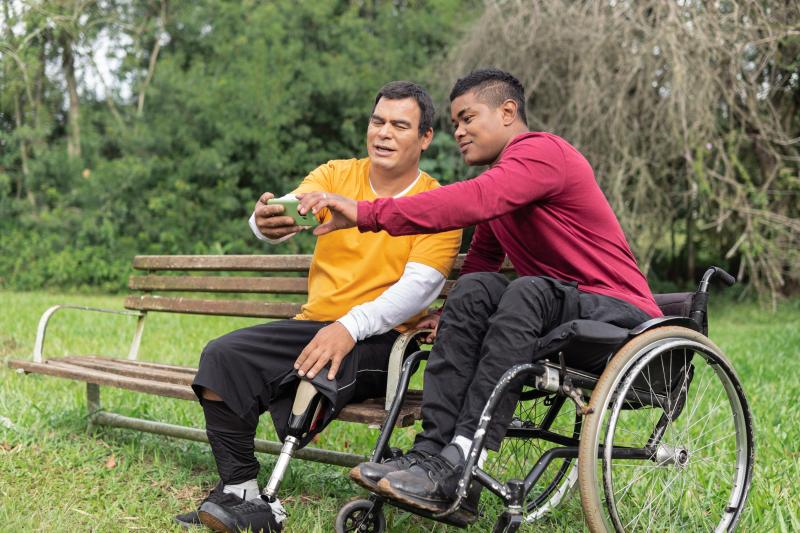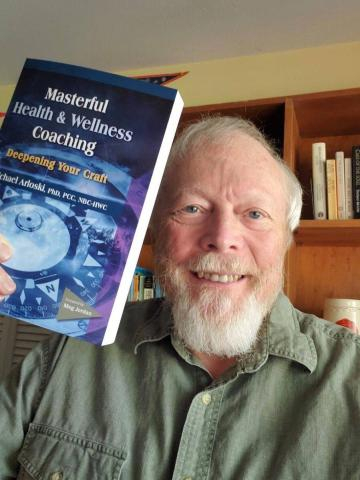The Coaching Conversation: Facilitating Versus Contributing

Coach training often talks about the importance of the ‘Coaching Conversation’. What is it exactly and how is it very different from a Social Conversation?
Coach Patrick Williams (https://drpatwilliams.com) describes the Coaching Conversation as:
Coaching is a conversation where the client gets to say what they have not said, think what they have not thought, and even dream out loud with a committed listener…That is when magic may occur.
Facilitating versus Contributing
As coaching students begin to practice coaching, they sometimes come to a place in the dialogue with their client where they have no idea how to contribute to the conversation. A silence ensues and shortly becomes awkward. The coach may attempt to rescue the conversation by throwing out the best question they can come up with in the moment.
These awkward silences rarely come up in our social conversations. When we sit with a friend at a coffee or tea shop and converse, we both share and contribute to the conversation. A person thinks “How can I add to the conversation? Can I inquire more about what the other person is saying? Do I have a similar experience that I can share? Perhaps this is where I want to share my opinion about this topic.” The conversation develops and hopefully becomes richer as both parties contribute.

Coaching conversations are different. Instead of contributing to the conversation, our job is to facilitate the conversation. We facilitate the client’s own work, their exploration, their clarification, their focus, their decision making, etc. What we contribute is our expertise at facilitation, growth facilitation.
The coach has the dual task of deeply listening to our client and considering how we can facilitate the client’s processing. Sometimes it is about giving evidence to the client that we are, in fact listening and comprehending what the client is saying. Paraphrasing, reflecting and summarizing what the client is saying show that we are listening and helps the client to stay focused or helps them focus better.
The facilitative coach is asking themselves: “How can I help my client to reflect upon their thinking/emotions/behavior? How can I help them to explore more, to question, to examine? How can I infect them with curiosity about themselves?”
The Intention of our Contributions

Even the best facilitative coach does make contributions to the Coaching Conversation but their intention in doing so is to facilitate their client’s work. We are not merely acting as a sounding board who mirrors our client’s speech. We share observations. We suggest tools to use. We offer valid resources. We share self-disclosures in an effective and coach-like way. (Self-Disclosure in Coaching – When Sharing Helps and Hinders ). In other words, there are many times when we coaches are being directive but doing so in a Client-Centered way. (Client-Centered Directiveness: An Oxymoron That Works – Part One ) (Client-Centered Directiveness: An Oxymoron That Works – Part Two: Adapting To Your Client )
Reporting Versus Exploring
Another way we facilitate the Coaching Conversation is to help re-direct our client back to the process of exploration when they are, instead, merely reporting what they have been doing. After we listen to our client’s reports about how they managed to carry out their committed action steps from our last appointment the key is to shift to helping them to learn from their experience. When we let our client go on and on detailing everything they ate, every step they took carrying out a commitment it often leads to little insight or progress. Our client knows what they did. They are not exploring new territory, and instead are taking us for another walk around their neighborhood, or worse, a trip down a rabbit hole.
Client: So, I got in my four walks last week.
Coach: Excellent! Tell me about those walks.
Client: Well, I had an errand to run in town, so I drove down Elizabeth Avenue and parked in city parking garage there. Then I walked from there to the post office where I bought some stamps. Then I cut across Midland Park to the bike path and…
Coach: Excuse me. That’s great that you’re combining your errands with getting your steps in. Tell me more about what you saw as you went through the park and along the bike path.
Client: You know, I’m really glad I took that route. It was a beautiful day, not too hot, and there were so many flowers in bloom in the park. It was lovely. And the bike path wasn’t too busy so I could watch some of the ducks swimming about on the creek that the path goes along.
Coach: Wow! So, you not only got your movement in, but you also had such an enjoyable experience doing it. You slowed down and noticed so many things you could enjoy that made getting out on a walk more fun!

Sometimes we have to assert that the Coaching Conversation is a two-way conversation. We don’t want to teach our clients that coaching is only about “You Talk and I Listen”. We actively participate in the conversation (with our facilitative intention). That may, at times, mean respectfully interrupting our clients to nudge them away from becoming mired in details and redirecting them to, in this case, notice some of the benefits of experience that feed intrinsic motivation. We want our client to recall their experience and profit from doing so. What did they notice and experience that was positive and would make doing the behavior again more appealing? That nudge may also take the form of asking them of the relevance what they have been saying has to their goals or wellness plan. To do so the coach has to hold the bigger picture in mind.
Holding The Big Picture
The coach has another simultaneous challenge, that of being a great listener whose coaching presence is focused on the present moment while at the same time holding the perspective of how what is happening in that moment fits into the bigger picture of the coaching process. While we are right here, right now with our client, listening intently to not only what they are saying but how they are saying it, we have to also be putting what is being said in the context of the coaching work we are doing with our client.
In the back of our minds, we are considering: How many sessions have we already had? How does this relate to what the client has told me before? How is it relevant to their Wellness Plan? Is this congruent with what they have told me about their values and what they wanted to accomplish in coaching? Somehow, we combine this broader context with the present moment. Not easy for us to do, but when we are able to do this, it provides structure and perhaps perspective for our client that can be valuable.
The Safe Container

Another distinction between the Coaching Conversation and the Social Conversation is the sanctity of ‘where’ it takes place. Providing the Facilitative Conditions of Coaching (The Facilitative Conditions of Coaching: The Essence of the Coaching Relationship ) : empathic understanding, unconditional positive regard and authenticity and genuiness combined with a professional level of confidentiality allows the client to feel safe, heard and understood. Knowing that they are speaking with an ally who has their best interests at heart, trust builds, and the client feels like they can say whatever they need to say and not be judged. This is what makes the Coaching Conversation special.
As we get more comfortable with our role as conversation facilitator, the Coaching Conversation becomes easier, lighter, and often more fun. Knowing that we are not responsible for ‘fixing’ our client, that they are responsible for their own choices in life and lifestyle, we can relax into being that ally who assists our client in accomplishing what they want to accomplish, that ally that, hopefully, assists them in living their best life possible.
 Michael Arloski, Ph.D., PCC, NBC-HWC is CEO and Founder of Real Balance Global Wellness – a world leader in health and wellness coach training. (www.realbalance.com). Doctor Arloski is a pioneering architect of the field of health and wellness coaching. He and his company have trained thousands of coaches around the world.
Michael Arloski, Ph.D., PCC, NBC-HWC is CEO and Founder of Real Balance Global Wellness – a world leader in health and wellness coach training. (www.realbalance.com). Doctor Arloski is a pioneering architect of the field of health and wellness coaching. He and his company have trained thousands of coaches around the world.








Only registered and logged in readers can leave comments.